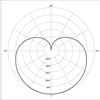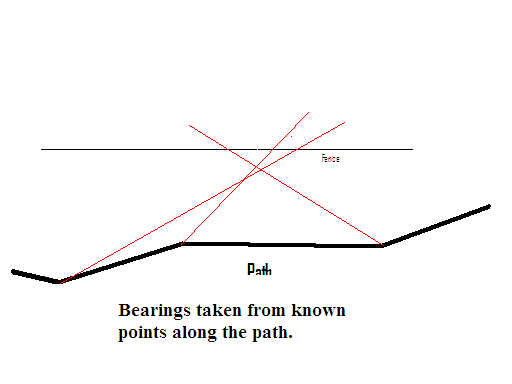|
|
-
Three Transmitters
are hiding
at places also Identified with a white and
orange prism-shaped flag at each place.
|
 |
- Get a control card on which you must
write your Name, Age, Address, and Phone
number twice
please.
-
Hand
this card in to the Starterwho
will give you the next available start time (in 5
minute
intervals, but he will keep half of the card. Only
after starting may you turn on your Direction Finding Radio, also
called a “Sniffer”
|

|
- Plug in the headphones. This turns the
sniffer on. Tune and listen for the foxes’ call-signs (see below).
As you turn around, the signal peaks when the ferrite rod is broadside
to the fox (front and back). To resolve the ambiguity about which way
to go, press the red button to activate the telescopic antenna as well.
This suppresses one of the signal reception lobes as seen by the signal
strength graph shown here. The greatest accuracy is obtained when the
signal fades out completely.
When you are very close to a fox, you will need to attenuate the signal
(turn the volume down).
|
 |
- Each fox broadcasts its call-sign in slow
Morse code on 3.51 MHz, 3.52
MHz, and 3.53 MHz respectively. They are:
M O
E sounds like “dah
dah dah dah dah dit “;
M O
I sounds like “dah
dah dah dah dah dit dit“;
M O
S sounds like “dah
dah dah dah dah dit dit dit“;
|

|
- Time allowed is 1/2
hour. One point will be deducted for each minute late in
returning. As you finish, we shall record your elapsed time,
and compute your score. Control cards will be progressively displayed
so that you may compare your score with others and discuss your
strategies.;
|
| |
-
As you find each fox, note its alphabetic identifying letter
(ignore any numbers), thus scoring 20 points for each.
|
-
You must hand in your control
card even if you abandon the course, otherwise we
will think that you are lost and a search party may be sent out to find
you.
|
-
TIP:
Ask about “triangulation”. This means:
from two or three different known places on your map, plot the bearings
to all of the foxes that you can hear. (For this you may need a compass
to orient your map.) Go that little bit further along the road to take
more bearings, thus making a precise intersection of these bearings to
show where all of the foxes are hiding. Then study your map to plan how
to run around the park by the shortest route, scoring 20 points for
each fox as you go. This is faster than bush-bashing towards each fox
in turn. Remember to keep an eye on your time out on the course so as
to avoid point deductions for being late back.
|

|
-
IF YOU HAD FUN, A GOLD COIN DONATION FOR BATTERY REPLACEMENT WOULD BE APPROPRIATE
|
